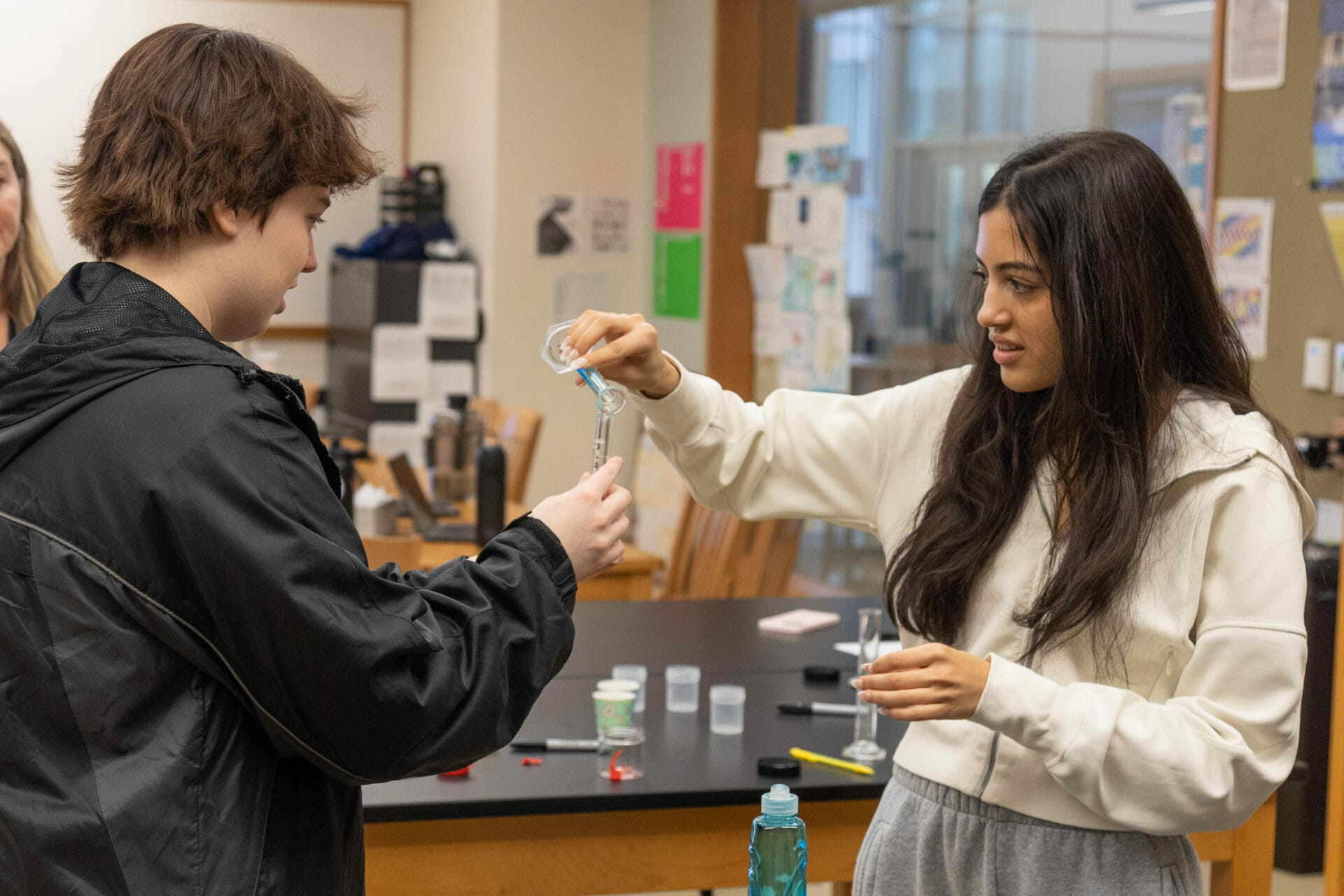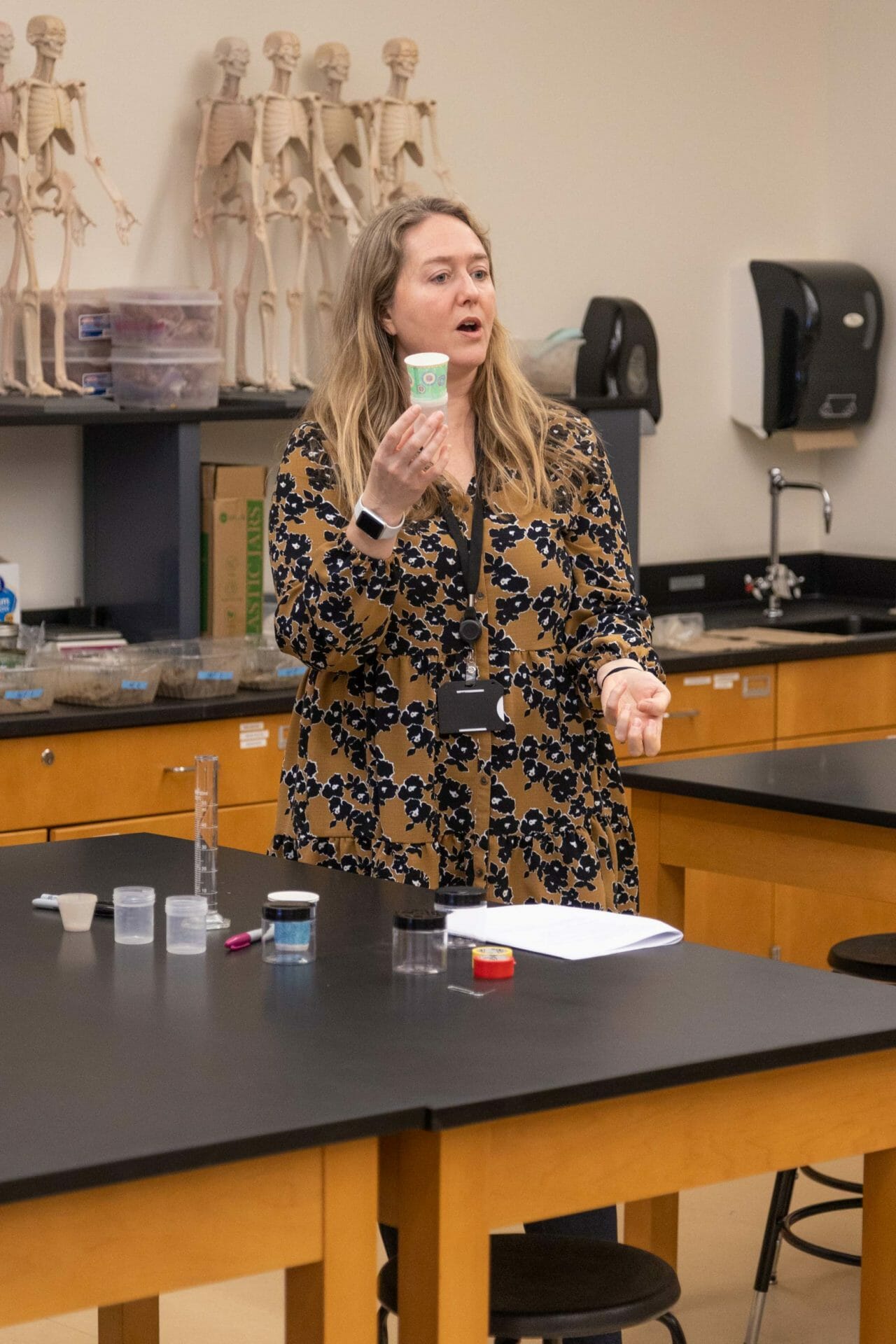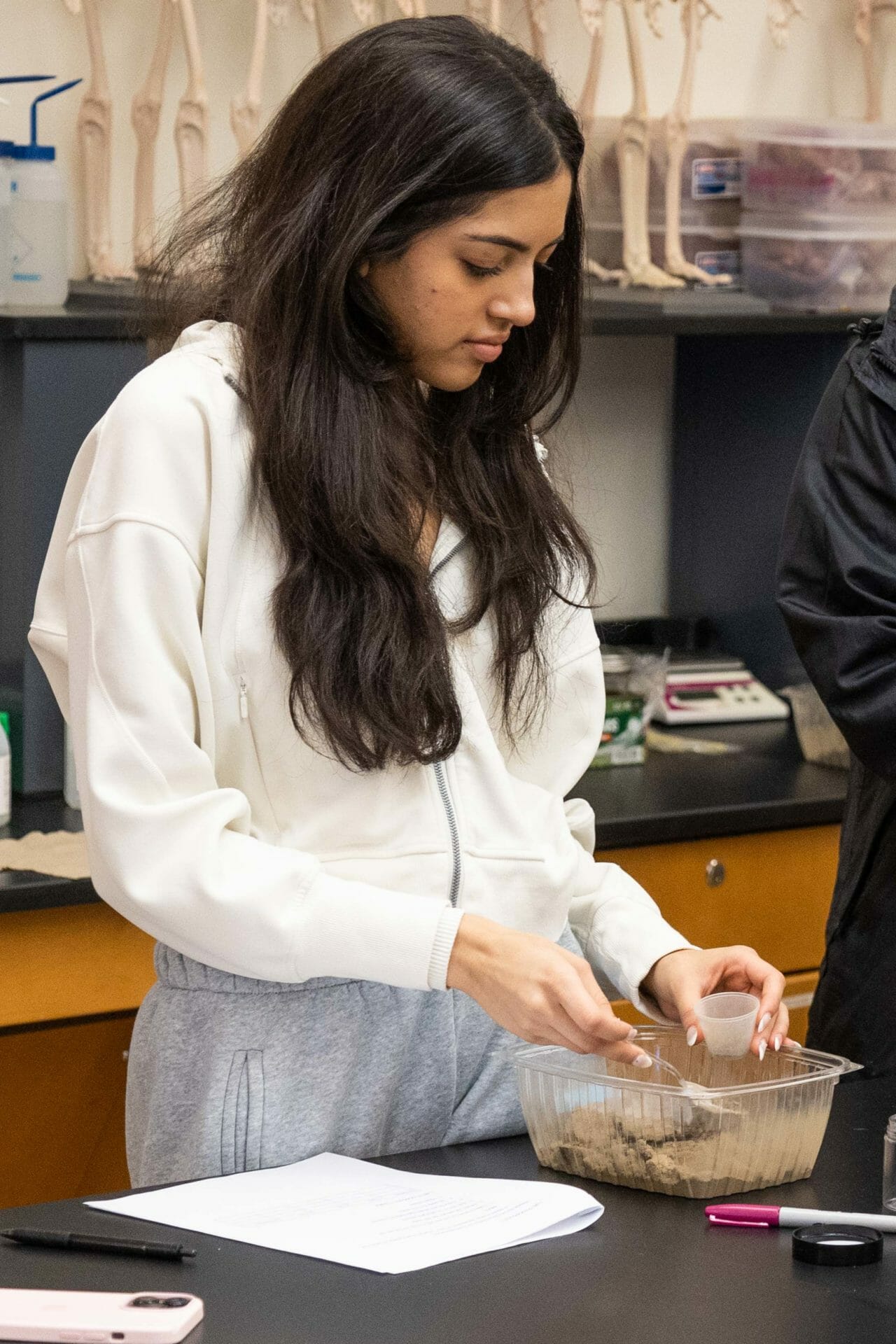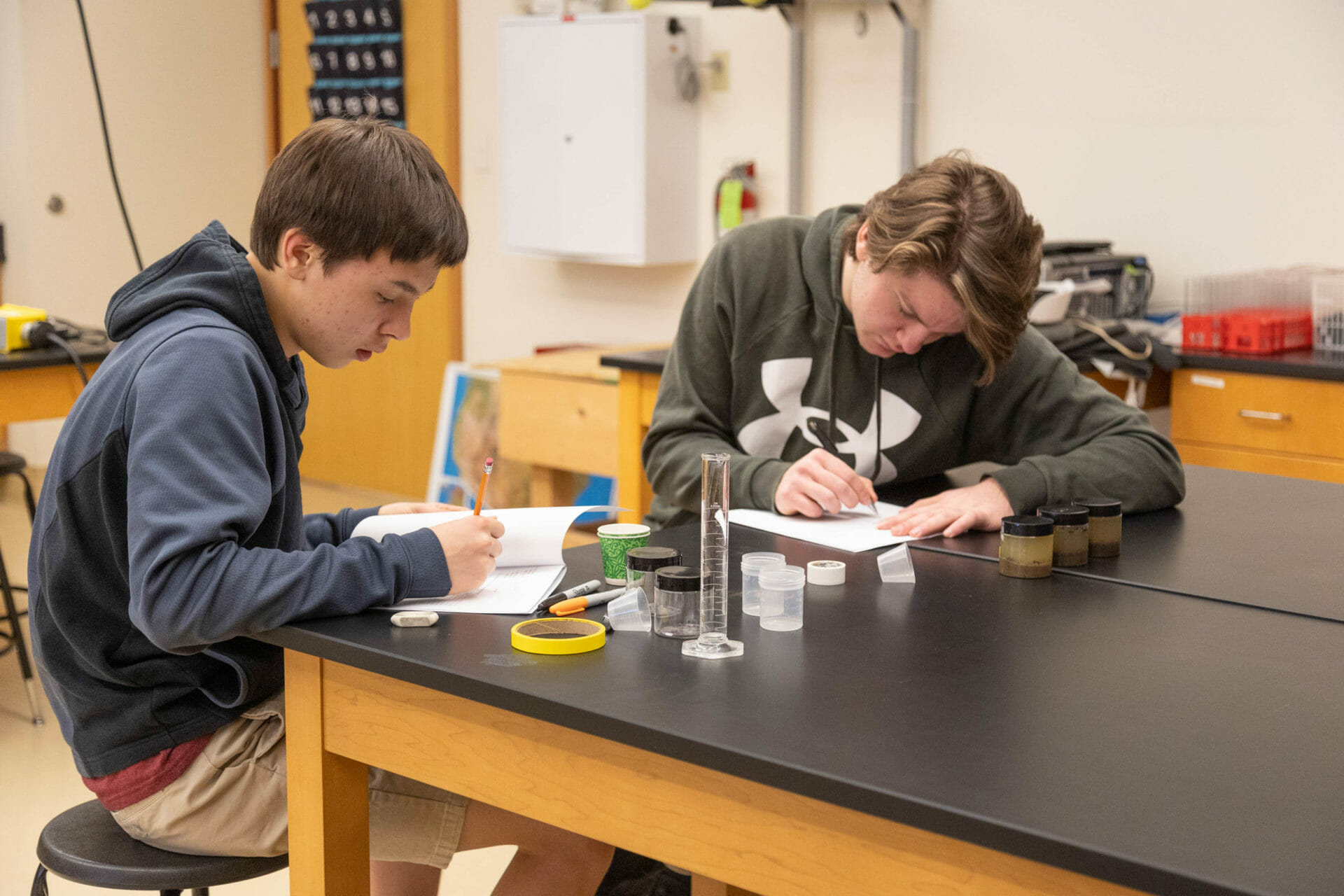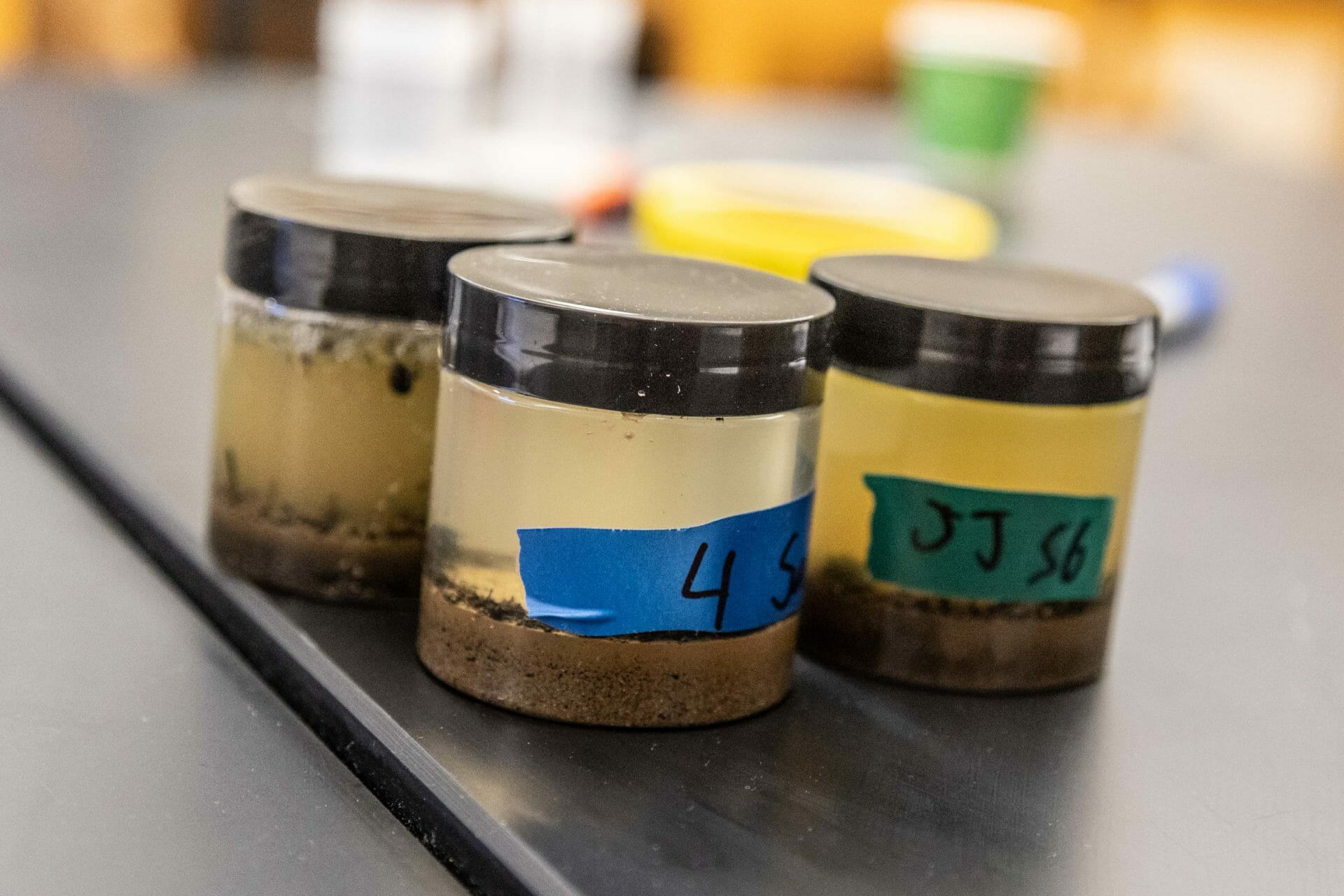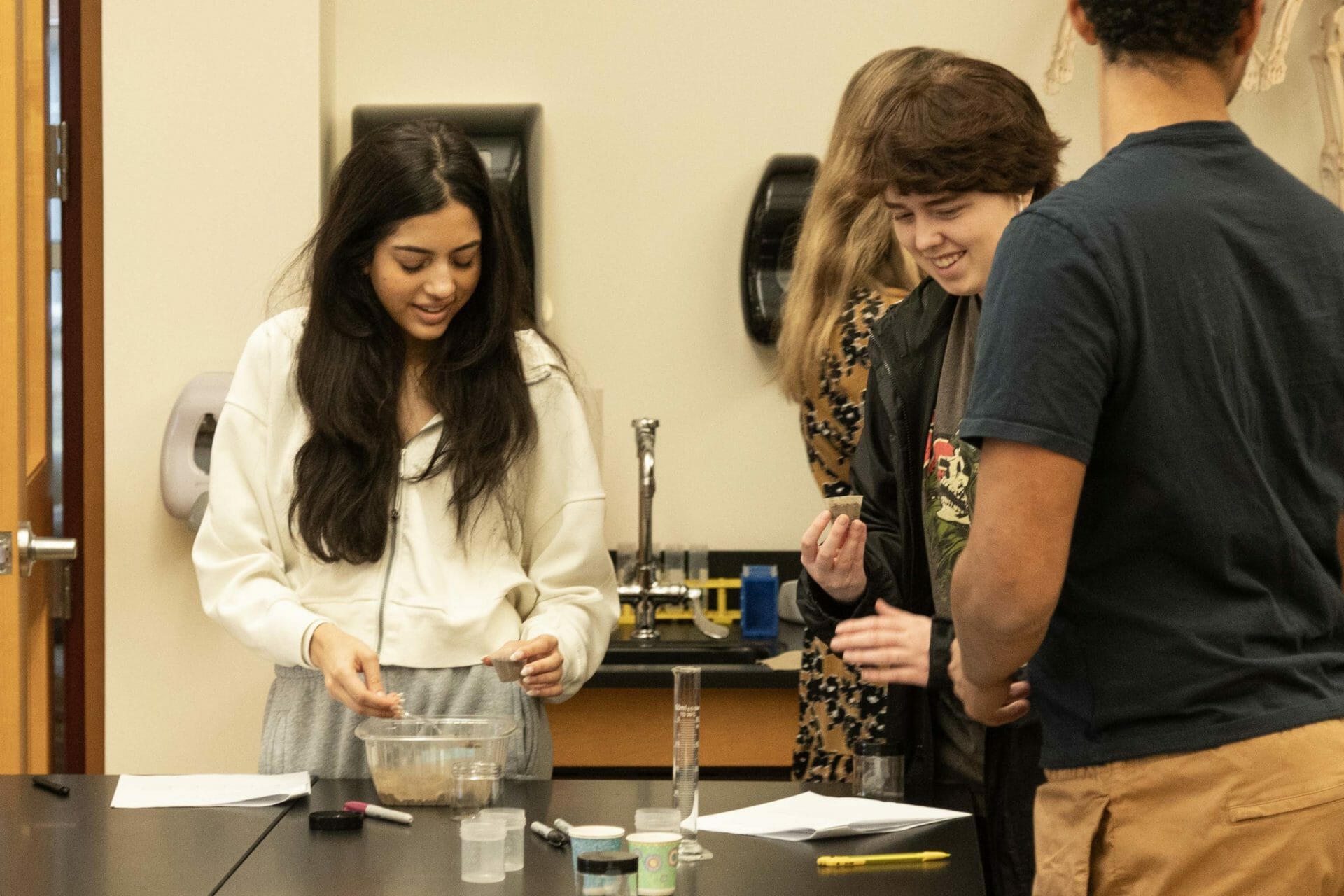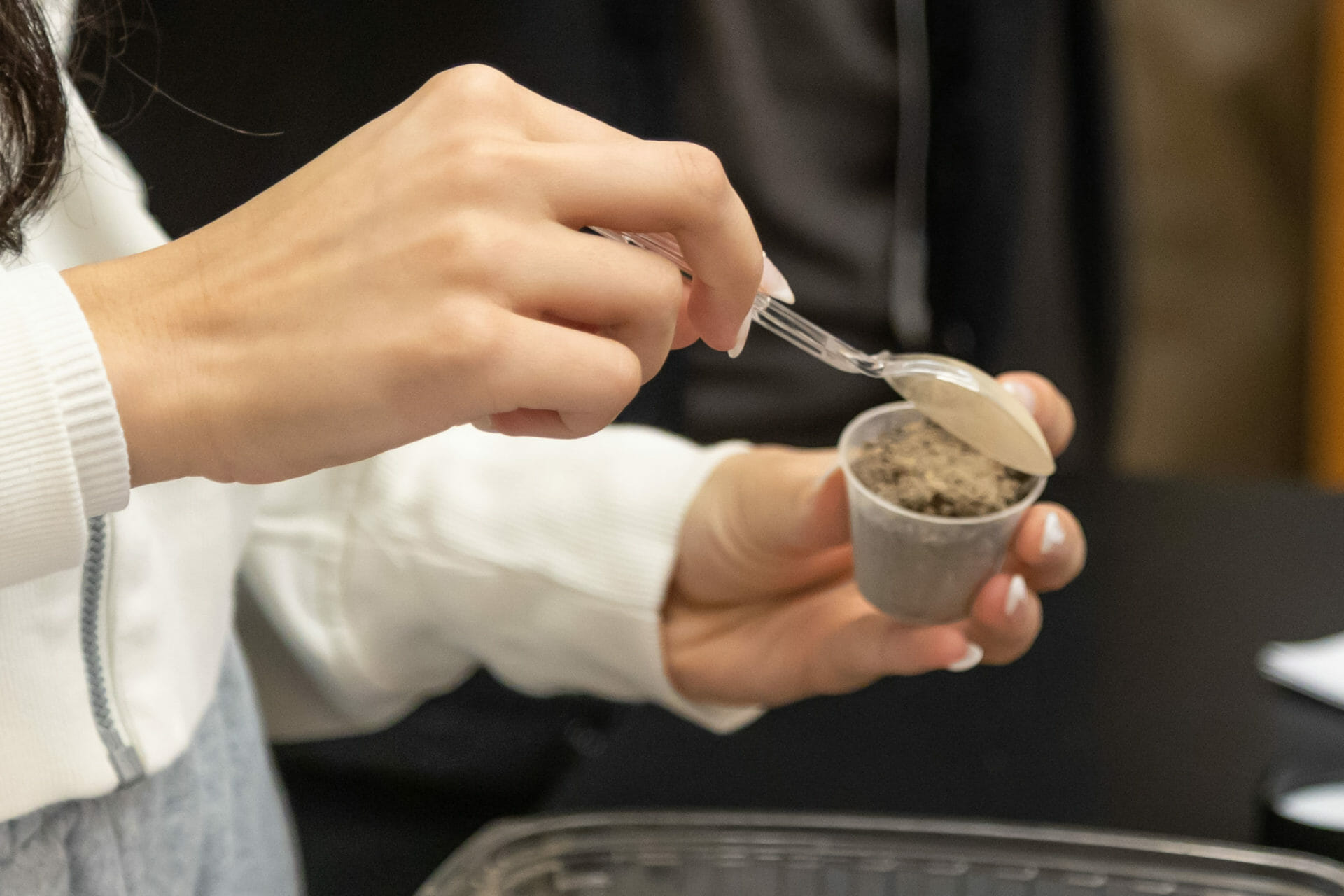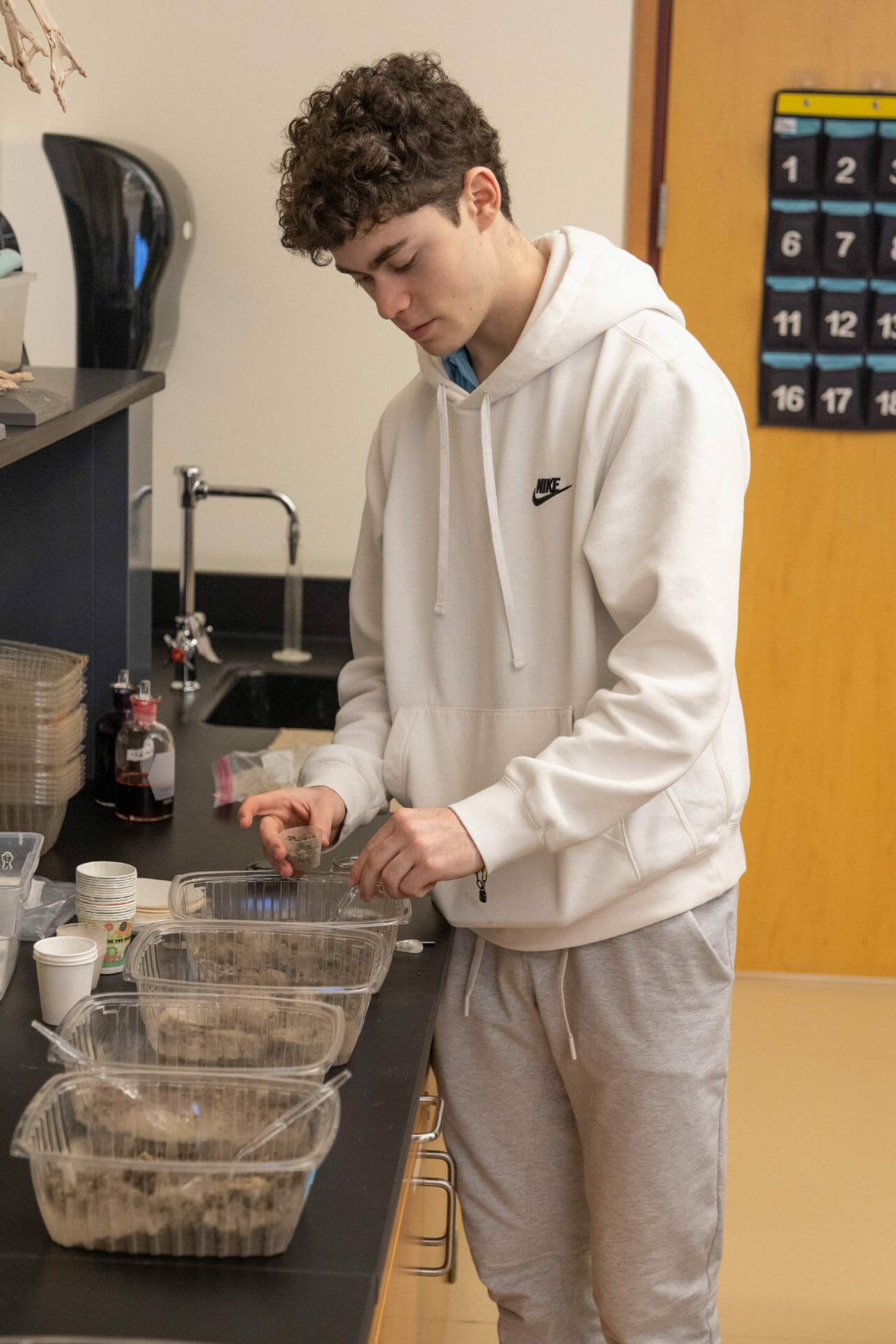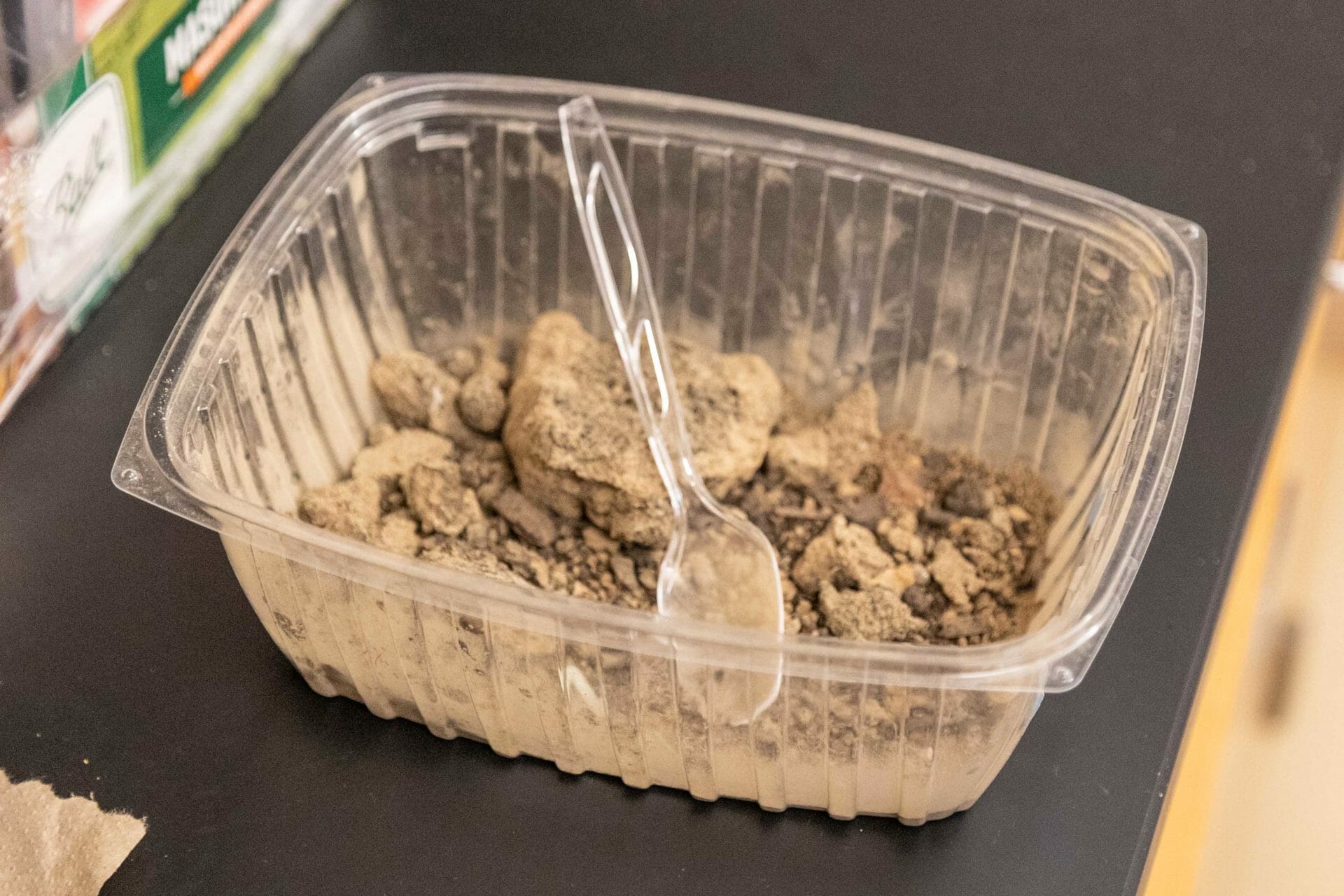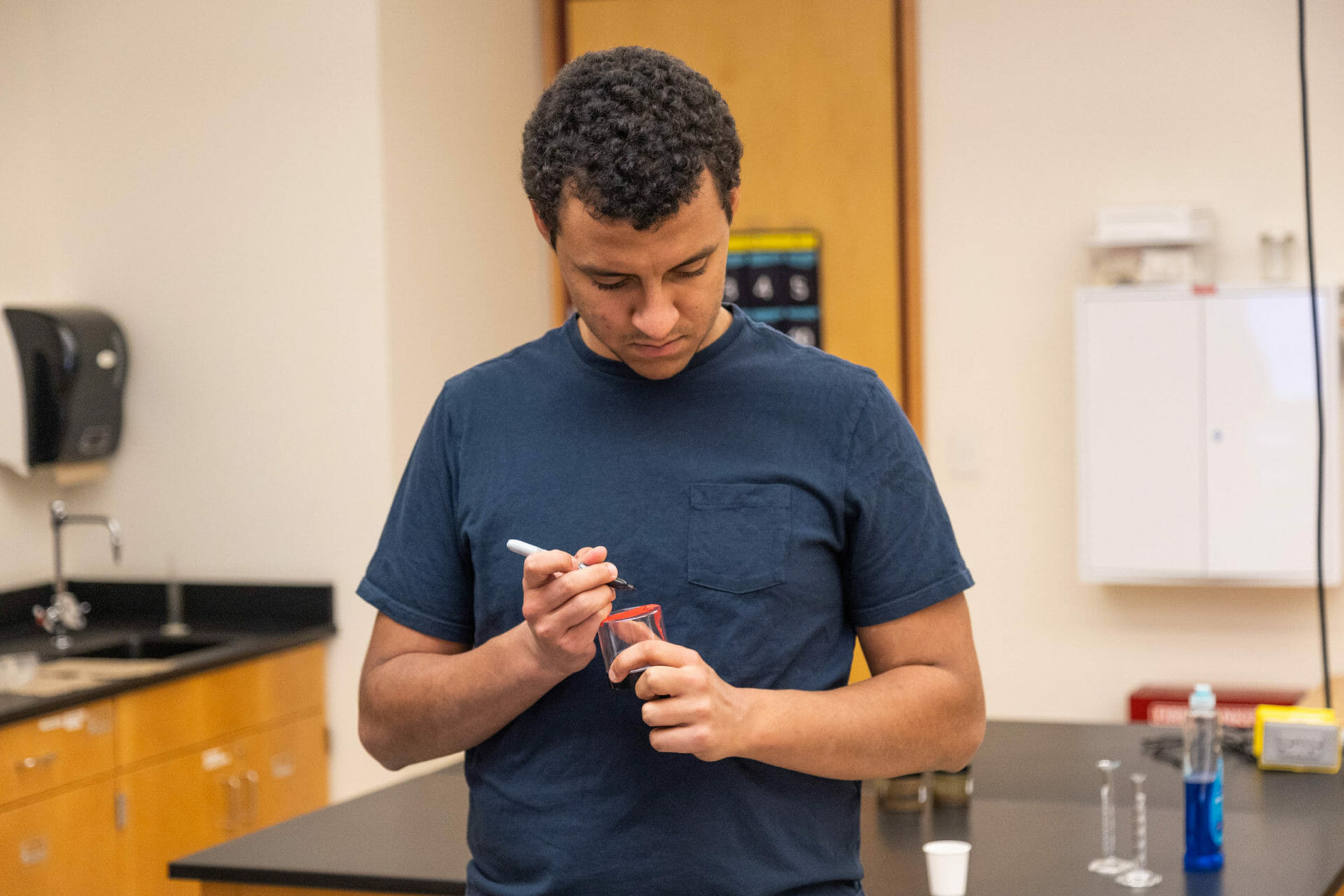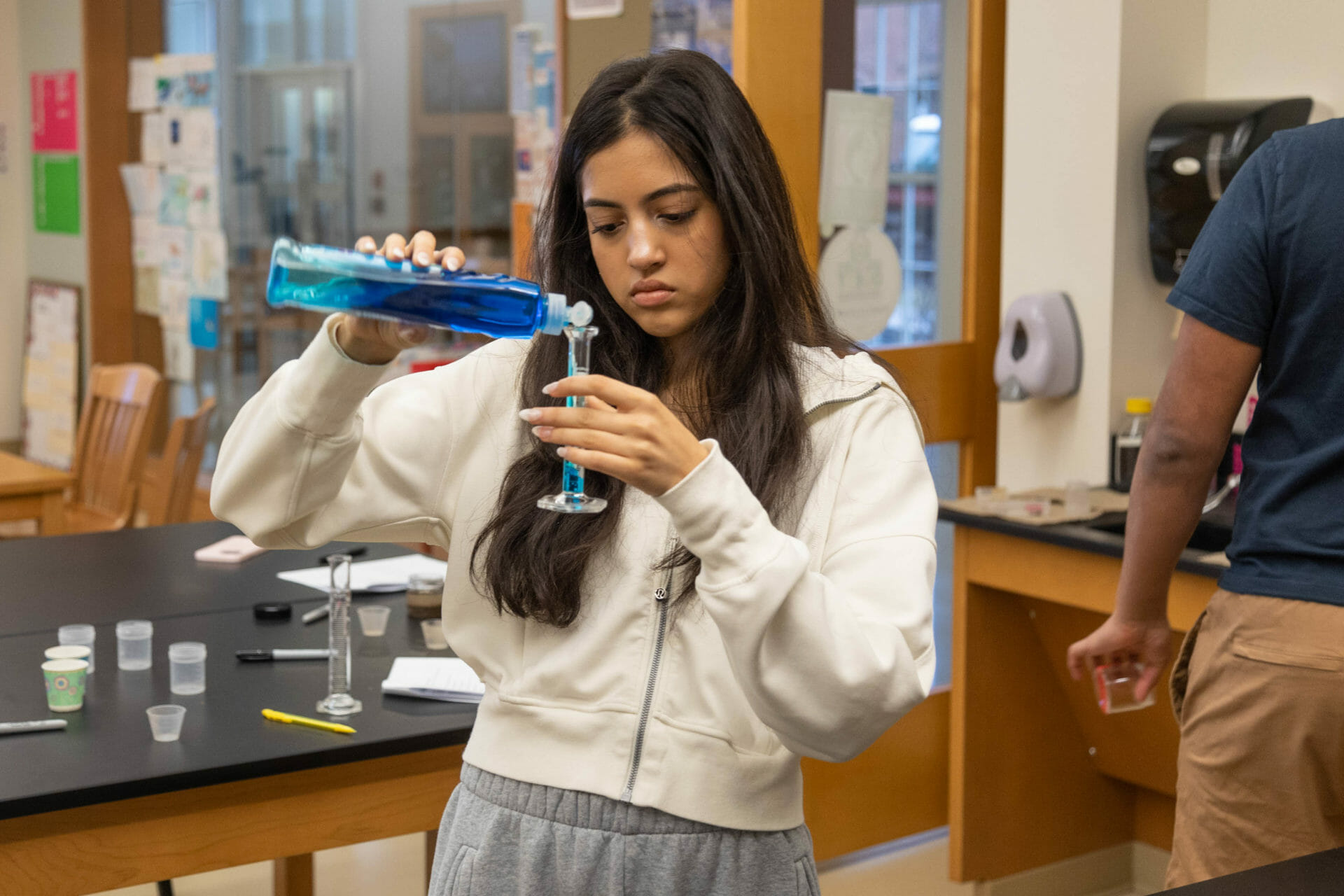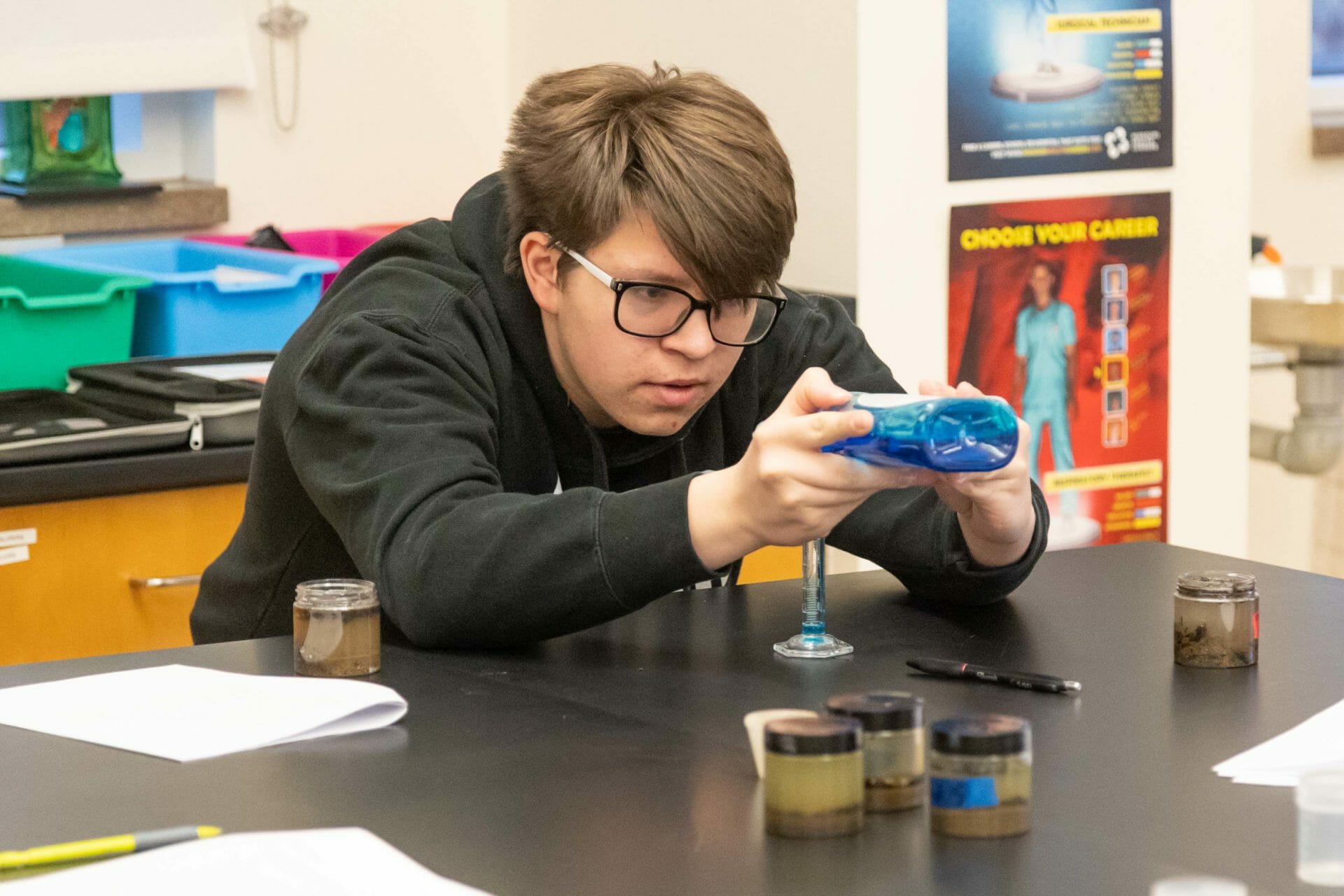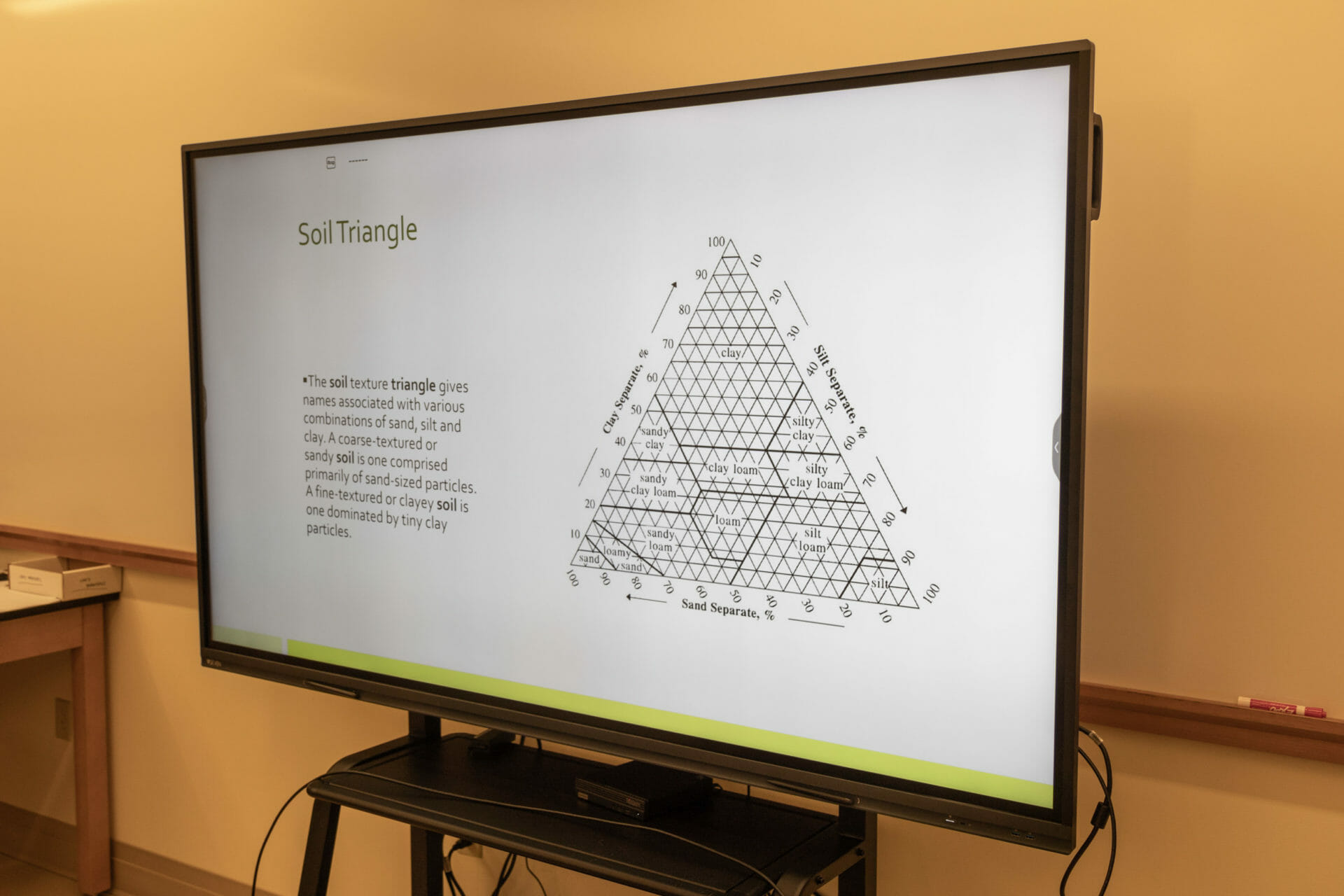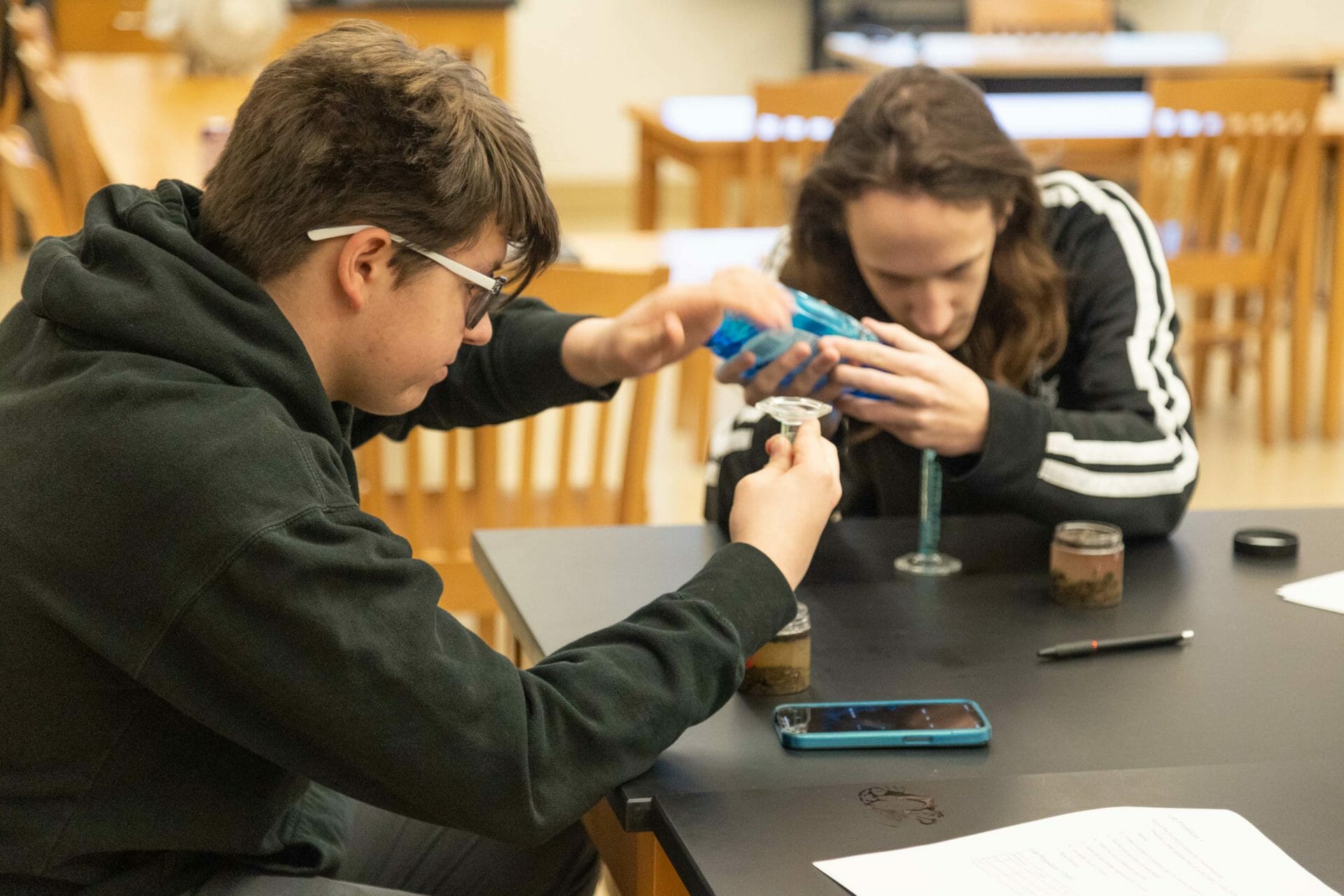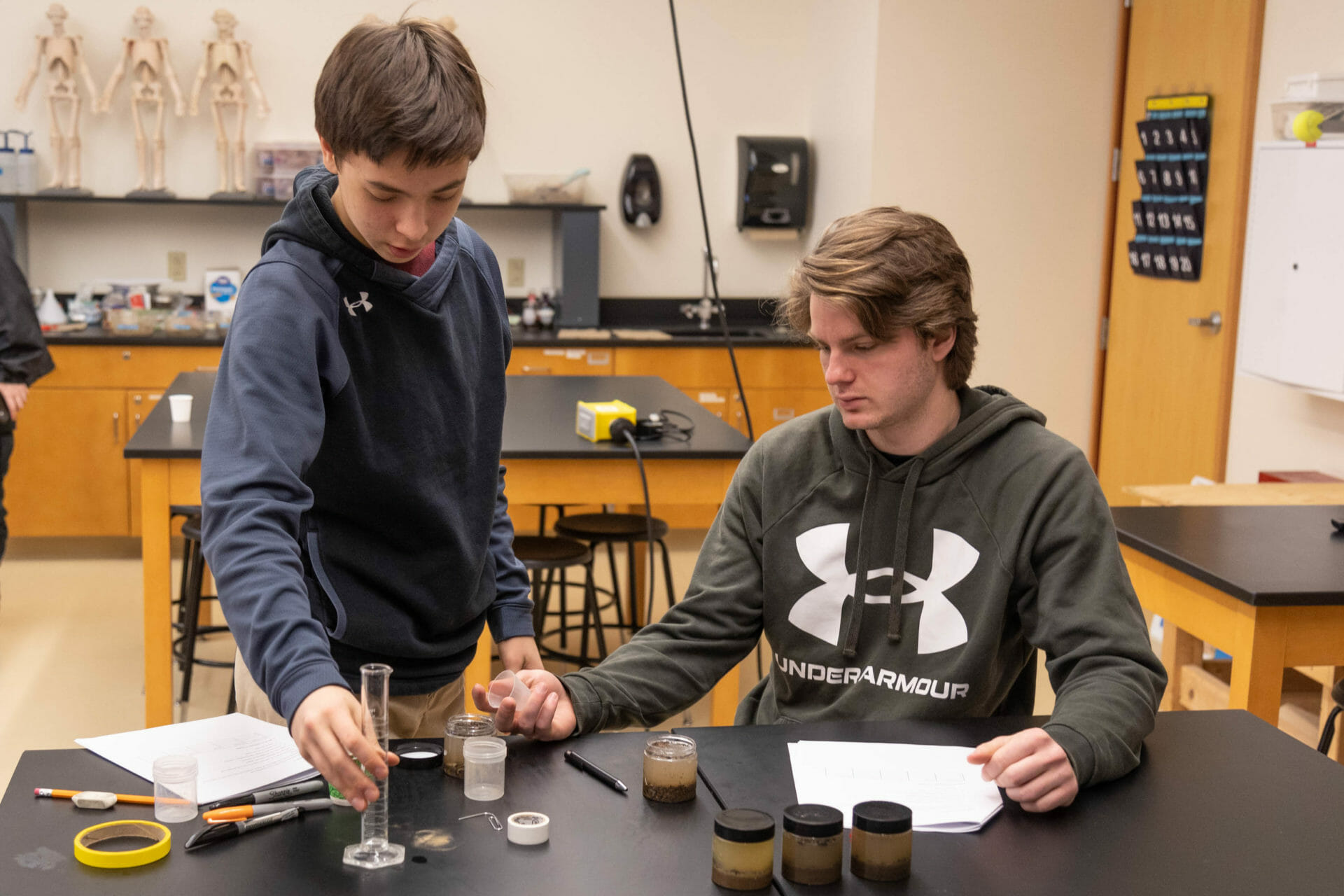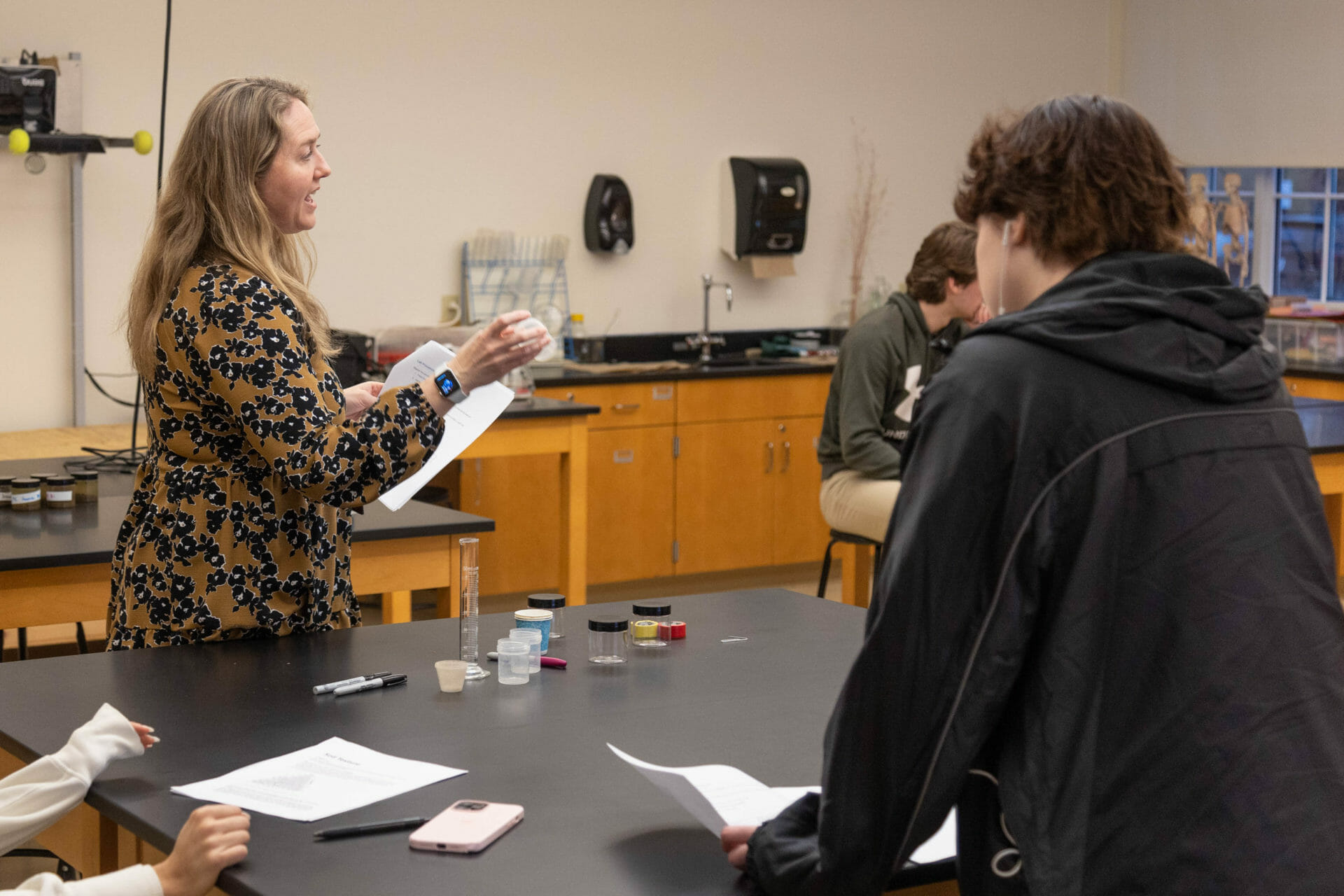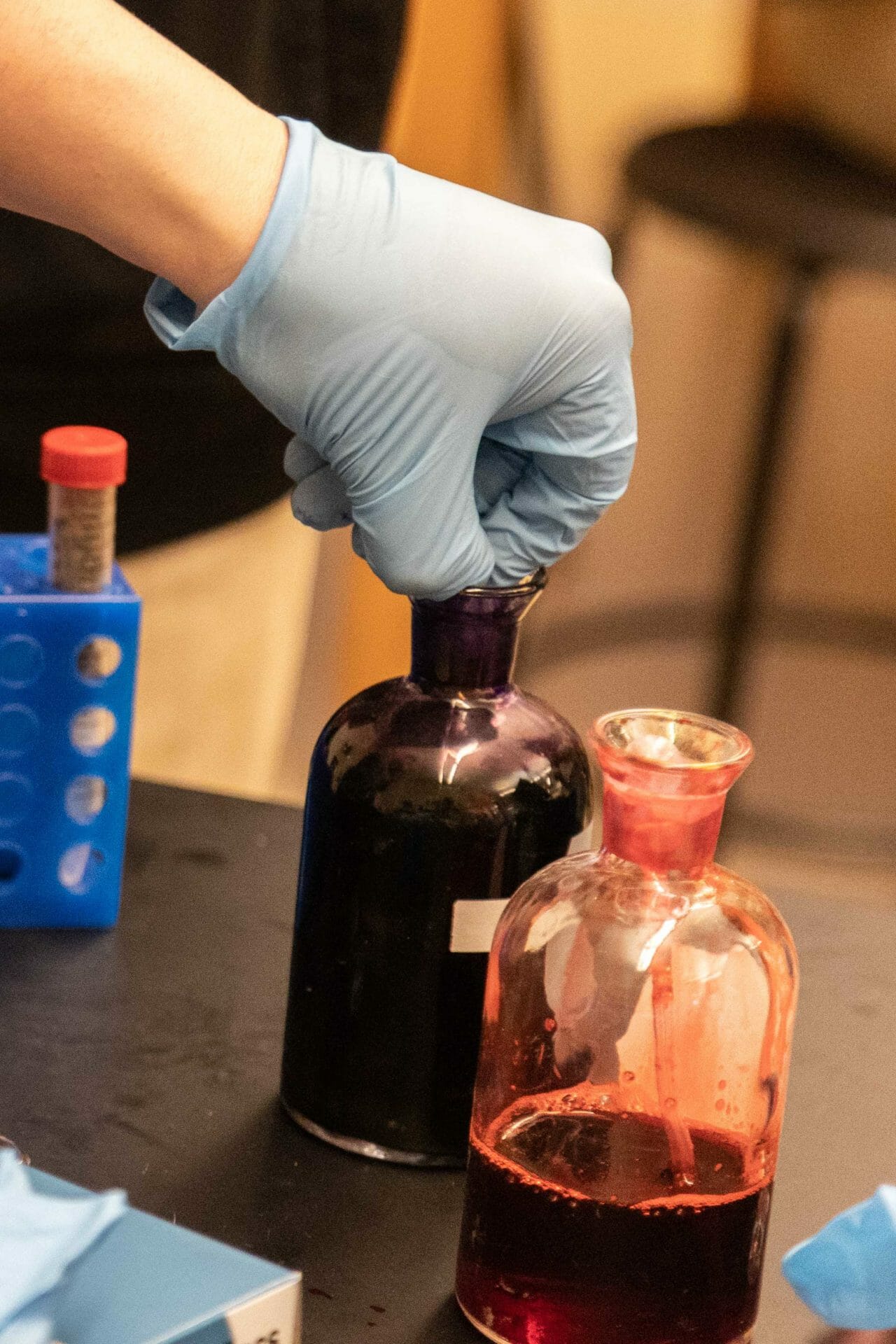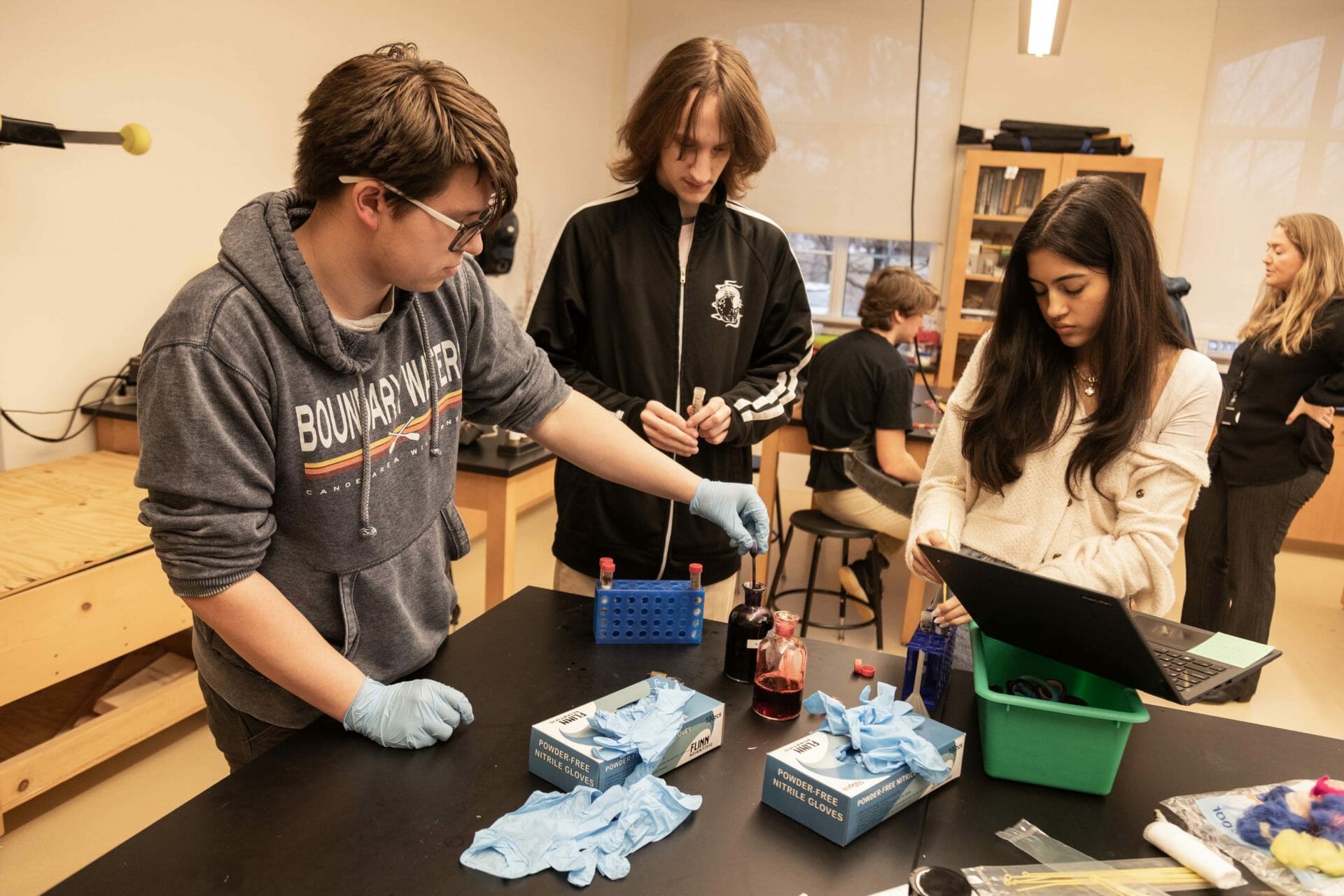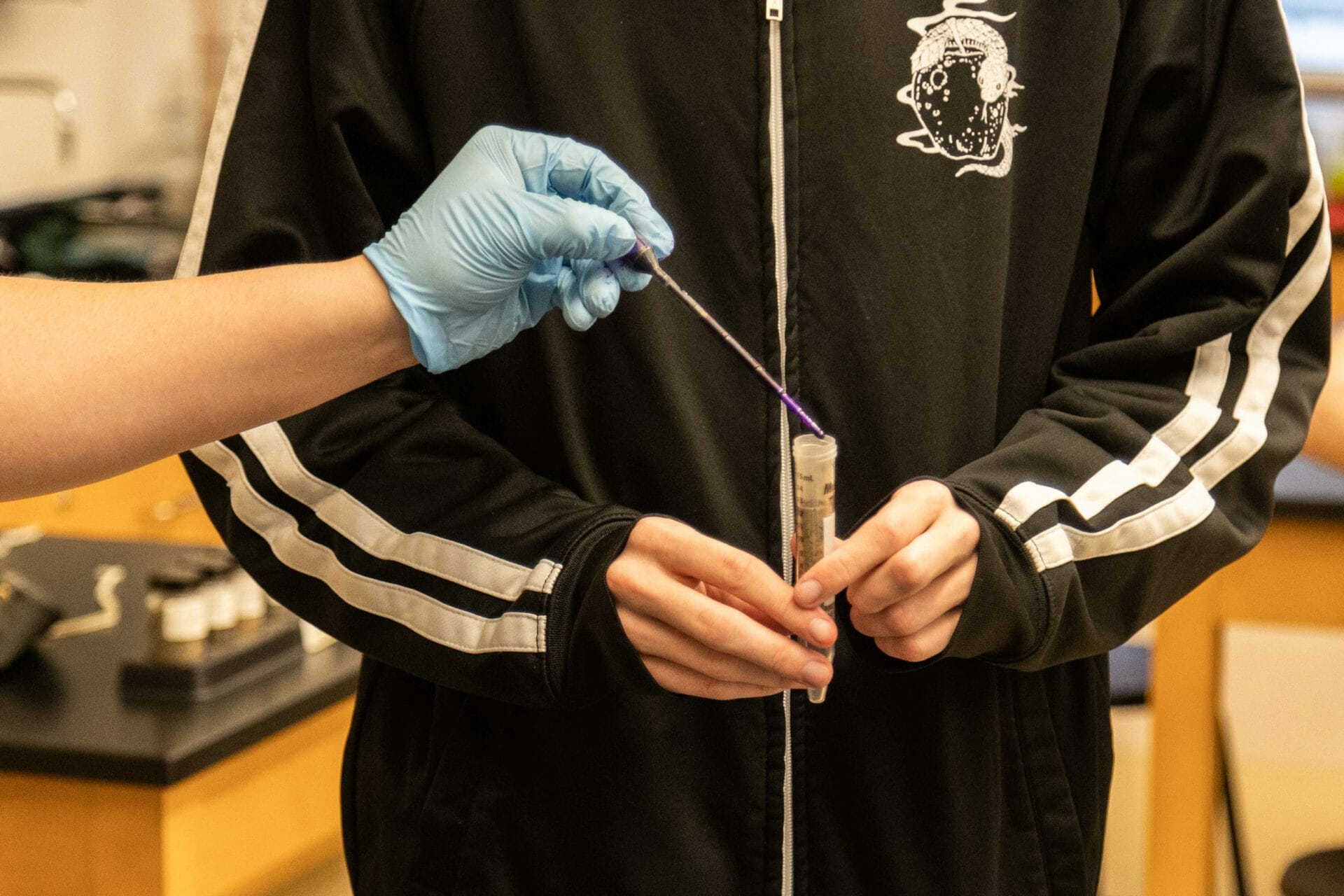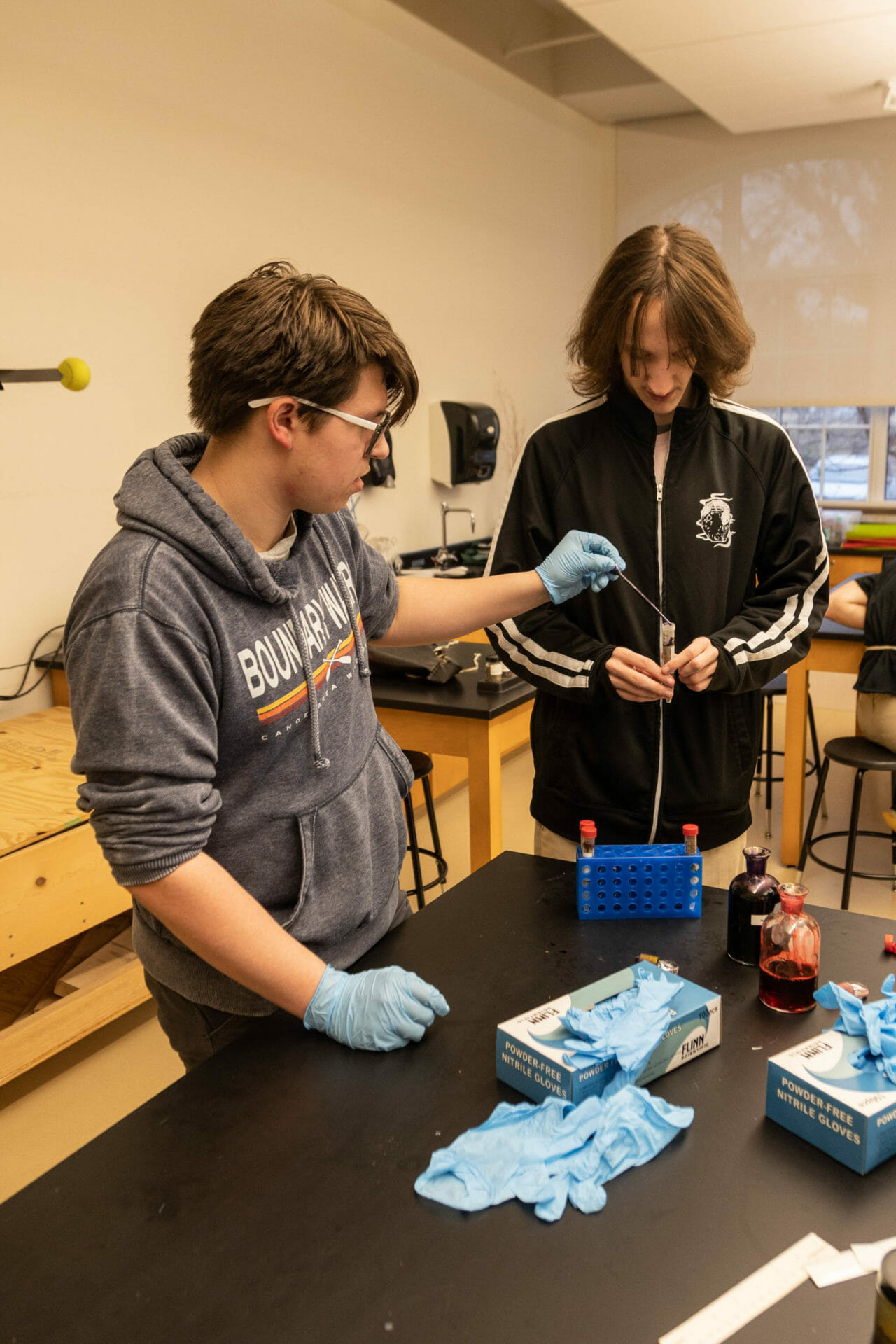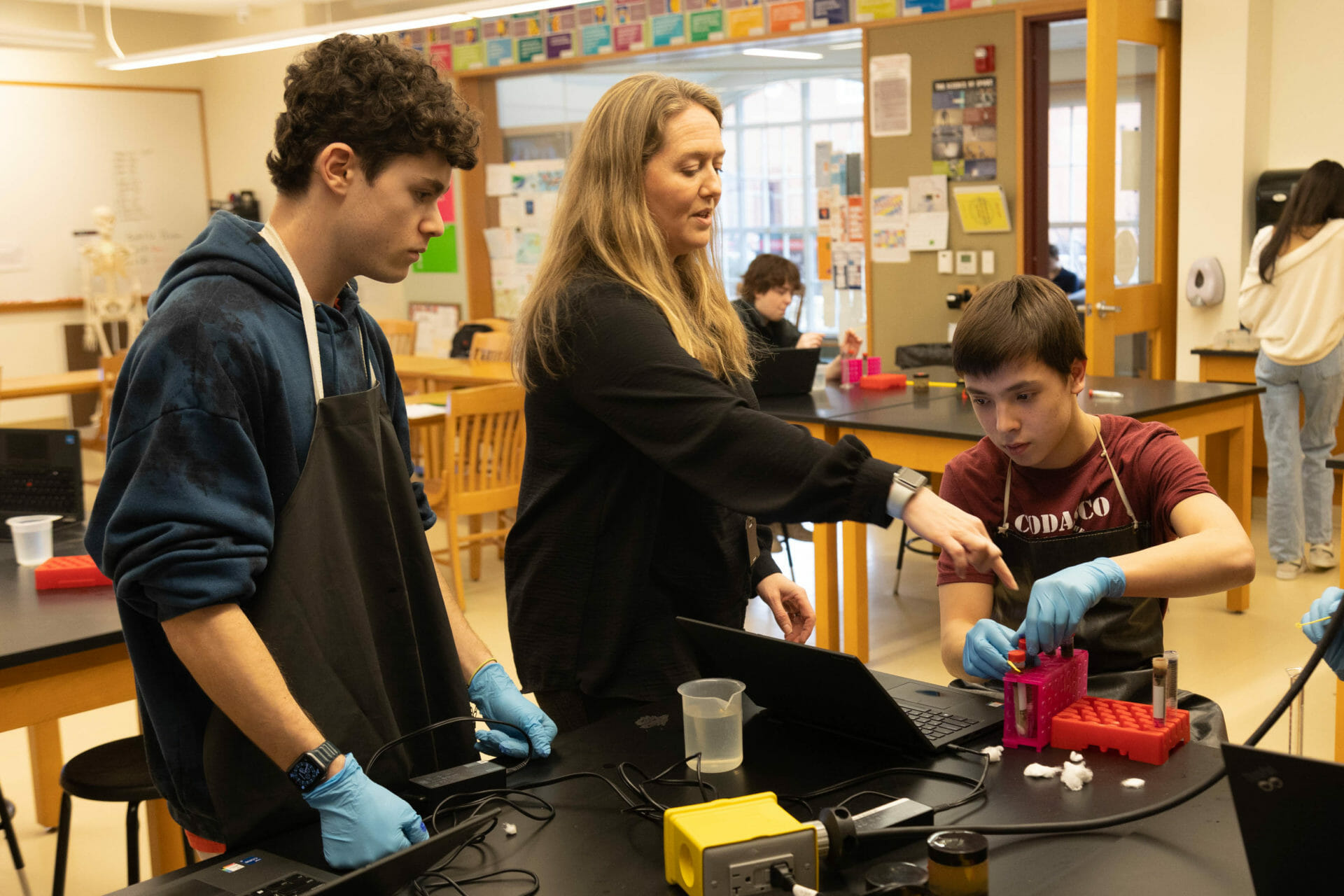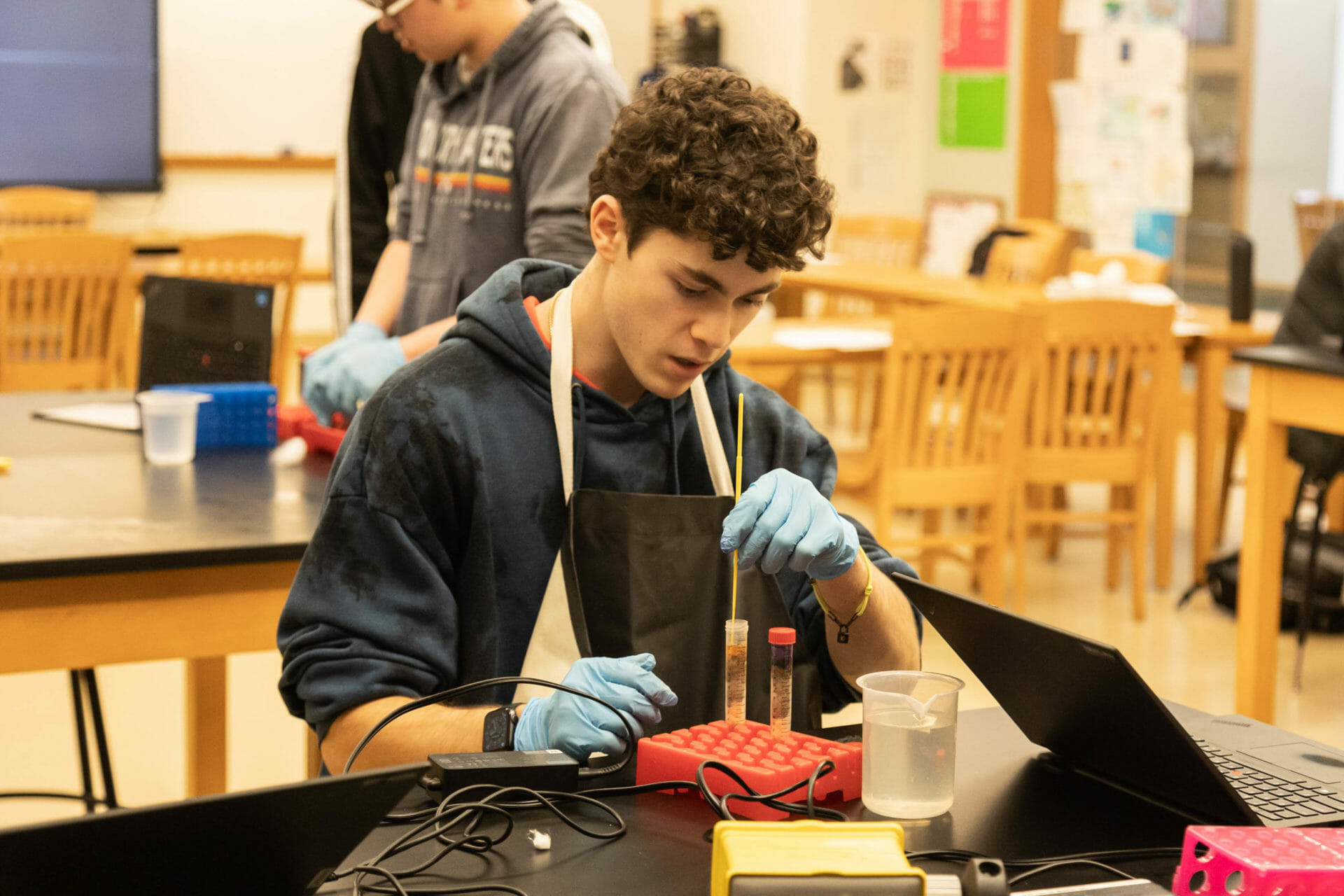This week in Environmental Science, Upper School Science Teacher Christine Pickett’s class is learning all about soil. You may know that soil is the top layer of the earth where plants grow, and that it’s mostly composed of a mix of organic remains, crushed rock, clay, and other substances. But did you know that a Soil Texture Triangle can help you identify a particular soil sample’s composition and social category?
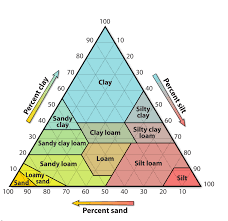
Our Upper School scientists in Pickett’s class got a full introduction to the Soil Texture Triangle as they conducted two different soil labs this week. Leading up to the labs, they learned that soil can have different compositions. In Arizona deserts, for example, the soil is mostly tan, while in Georgia, the soil is mostly red. Each soil sample is composed of various percentages of sand, silt, and clay. The triangle helps scientists analyze the soil to figure out which of the 12 texture categories it belongs to: clay, silty clay, silty clay loam, clay loam, loam, silt loam, silt, sandy clay, sandy clay loam, sandy loam, loamy sand, and sand.
Students were taught how to read the soil texture triangle. A single point on the triangle has diagonal and horizontal lines running through it. These lines can be traced horizontally or diagonally to show the percentage of clay, silt, and sand that a sample of soil contains. This can be handy when you know two of the components’ percentages because then you can figure out the third component’s percentage using the triangle. Then, once you have all three percentages plotted on the triangle by a single, intersecting point, you’ll be able to classify that particular soil sample as a specific texture type.
Back at the first lab, students prepped three samples. First, they gathered a sample free of rocks, organic forest material, and other inert debris. They then collected eight drams of soil and added it to the soil sample vial. They filled the soil sample vial with water, added one milliliter of detergent solution, closed the lid, and shook the vial for one minute. After letting the sample settle for 8-12 hours, they read the sample, analyzing the percentage of sand, silt, and clay, which then helped them determine the soil texture.
In the second lab, students poked three holes in the bottom of a cup. They filled the cup with eight drams of soil, packing it down to minimize air space. They positioned the cup with the soil above an empty cup with no holes to catch water as it dripped through the soil. After measuring 25 milliliters of water, they slowly poured it into the soil-filled cup. After a minute, they set aside the cup with the soil before measuring and recording the collected water. This Porosity Lab determines whether the soil is made up of small or large particles. If soils have large particles, like sand, they do not hold much water. If soils have small particles, like clay, they hold more water.
To bring this lesson home, students tested soil on the MICDS campus. “We collected soil samples from different parts of MICDS and saw a variety of types of soil with a variety of porosities,” shared Pickett. Besides testing soil composition and porosity, students also tested soils for pH and levels of nitrogen, phosphorus, and potassium.”
Great work sifting through this earth-breaking knowledge, Upper School scientists!
